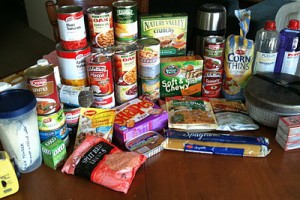It’s scary to think about hazards. No one wants to imagine a river breaking its banks and flowing unrestrained through their town, or watching the walls of their house beginning to sway as the earth below them shakes back and forth.
But, with our Community Planning Workshop (CPW) project focusing on hazard mitigation planning, it’s become our job to plan for these things that no one really wants to think about. Throughout the course of this project, we’ve realized there’s an easier way to get people thinking and talking about natural hazards: make it a game!
Here are some good places to start –
Pandemic is a cooperative board game where players work together, instead of against one another, to save the world from a viral outbreak. It’s a great example of making hazard planning entertaining and educational. It didn’t take long for us to the notice the similarities between the board game and our Community Planning Workshop project. While we are not saving the world from a biohazard, we are all working together to protect the city of Madras from natural hazards. Unfortunately, we didn’t save the world in Pandemic, but we did realize how much fun we were having learning about hazard planning!
Our team has been joking that since we enjoyed Pandemic so much, we should make an Oregon-specific version of the game. Instead of playing as a group of scientists saving the word from an epidemic, our Oregon version would have players step into the role of planners to prepare Oregon against natural hazards. While we would love to make this game a reality, our main goal is raising awareness about hazard planning and how it can be both entertaining and educational!
On our last visit to Madras, we brought along an Auto Bingo game that kept us on our toes the entire six-hour car trip to Madras and back to Eugene. For the next trip, we discussed creating our own natural hazard bingo game. It could consist of watching for signs of a past hazard like trees charred from a wildfire, flood hazards like creeks or drainage ditches clogged with debris, or signs of preparedness like fire hydrants. The possibilities are endless. This activity can get children and their parents thinking about and discussing natural hazard planning.
Part of hazard planning is making sure folks know how to prepare themselves and their families in the event of a hazard. Families should make sure they have their emergency pantry stocked with a three-day food supply.
To further prepare yourself, you can have an emergency kit dinner night! Check out this FEMA resource to learn what to pack in an emergency food kit and this Red Cross resource for everything you need to know to make your food and water last in an emergency. For extra fun, try cooking on a camp stove instead of your electric or gas range (which shouldn’t be used after a disaster). Just don’t forget to restock your food and fuel after you have your fun!

About the Authors: Drew Pfefferle, Laura Stroud and Ross Peizer are all first year Master of Community and Regional Planning students. They hail from around the country and all worked professionally before beginning the graduate program. Their experiences outside of the classroom inspired them to go back to school to study planning as a profession.



